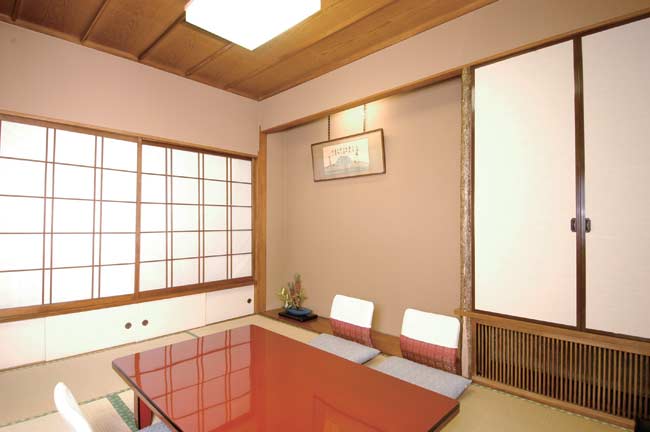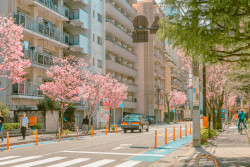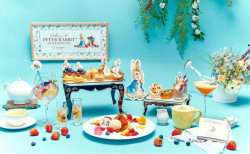
July 24, 2009
Hanabusa
Enjoy traditional cooking—and service—at this Soto-Kanda hideaway
By Metropolis
Originally published on metropolis.co.jp on July 2009

Mrs. Sato is not as spry as she once was, but when she bows and smiles to greet you, you know you’ve chosen the right place for dinner. After 45 years of looking after customers, there is a kindness and lilt to her personality that immediately make you feel welcome—as if you’ve lived around the corner for years.
Hanabusa is a relaxed, unassuming place with a blond wood counter like you’d find in a sushi bar, comfortable stools, and a steep staircase decorated with intricate wickerwork between the iron railings leading up to tatami rooms.
The restaurant is famed for its dinner set: the Chiyoda-zen (¥5,000), a tasting menu of what is seasonal and freshest at Tsukiji market. The seven-course affair unfolds at a measured pace, timed by the watchful eyes of the head chef or Mrs. Sato. The dishes vary day to day, but first to arrive will be an otoshi, which recently was a pale green ume plum, stewed then chilled to a plump lusciousness.
Sake, of course, marries well with all the dishes, and a chilled flask of junmaishu Kagatobi from Fukumitsuya Brewery in Ishikawa Prefecture (¥1,000) will perfectly suit the next dish, the otsukuri, a small plate of sparkling fresh sashimi, which consisted of karei (flounder), uni, shiba ebi and toro.
At the proper moment, the o-suimono will arrive—a clear soup to cleanse the palate. When the black lacquered lid was lifted, a brief citrusy kiss of yuzu wafted out, and centered in the clear broth was one of summer’s most popular delicacies, hamo (pike conger), its brilliant white flesh accented by a red dab of bainiku plum. Suspended in the broth were the leafy shoots of junsai (water lily), each encased in its gelatinous sheath.
The main course is the shoka bento box, each quarter section containing tidbits prepared in a different manner—grilled, simmered, deep-fried and vinegared—to contrast and complement each other. Grilled was a slice of aka mutsu (bluefish) with a toothsome miso sauce. Simmered were chunks of tender octopus, carrot, taro and pumpkin. Deep-fried were two savory shrimp dumplings, and serving as a refreshing counterpoint was a dish of tart, vinegary mozuku (seaweed filaments).

A steamed-food (mushimono) interlude comes next: two slices of dashi-maki tamago, rolled egg omelet, tender and delicious.
When the chef judges you’re ready, the oshokuji “meal” of takikomi rice, red miso soup and housemade pickles will be served. The takikomi was a very tasty rice bowl flavored with dashi, shoyu and sake, and mixed with grilled bits of sweetfish and burdock root.
Wrapping things up is the shira-tama zensai, a tea-like dessert soup made from azuki beans with a “white ball” of meltingly tender mochi rice cake and a few beans at the bottom of the red lacquer cup.
Mrs. Sato, if she’s feeling fit, will see you out the door, bowing and waiting until you’ve safely rounded the corner and are out of sight before she goes back inside







